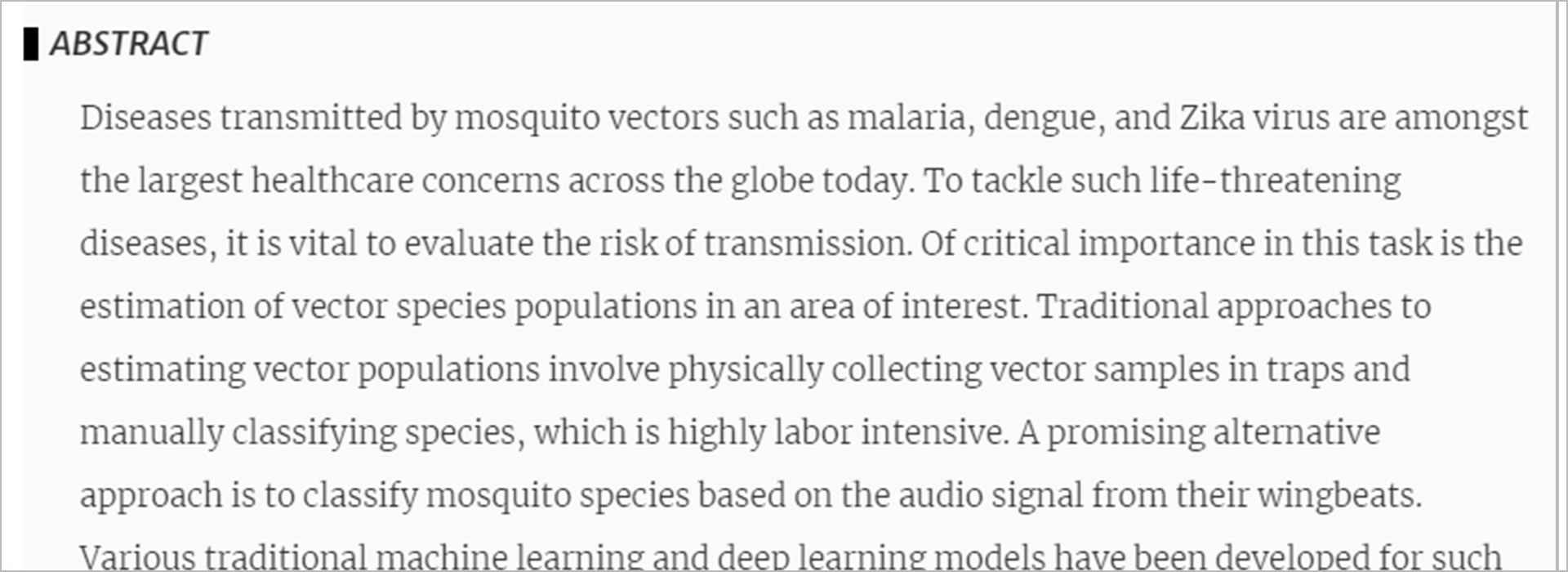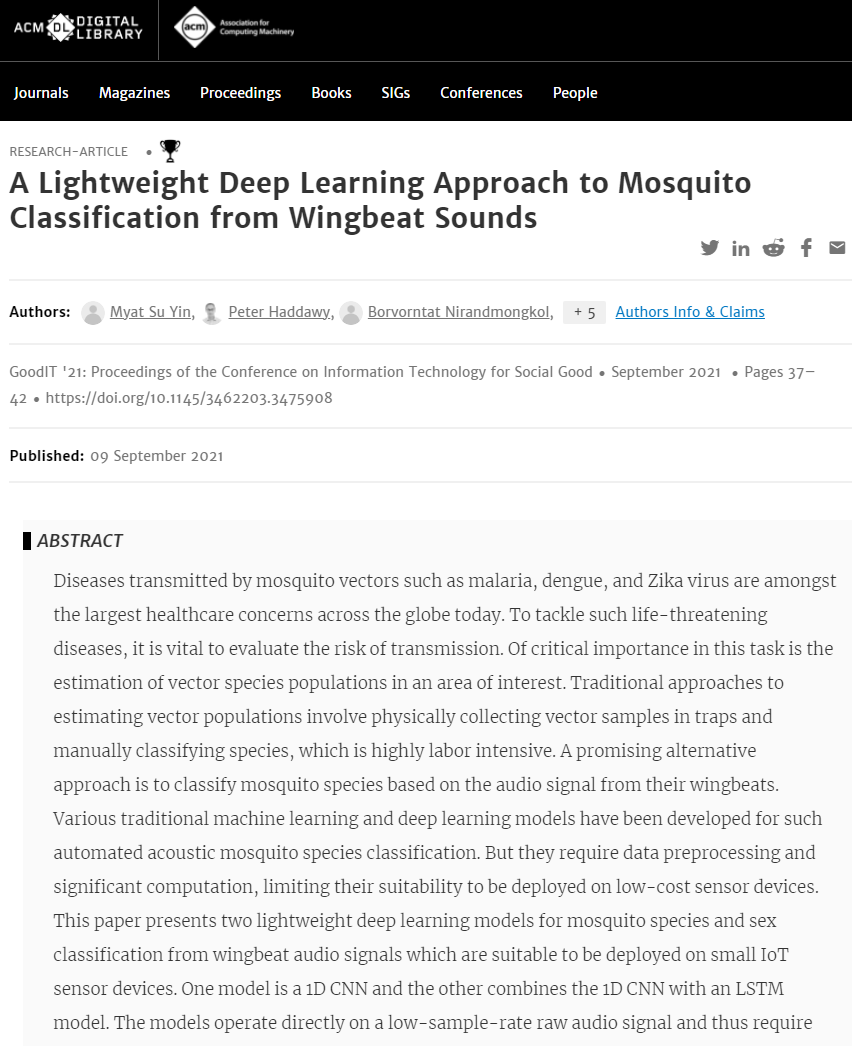Journal /Conference
ACM Int’l Conf. on Information Technology for Social Good (Best paper award)
Authors
Myat Su Yin (1), Peter Haddawy (1 2), Borvorntat Nirandmongkol (1), Tup Kongthaworn (1), Chanaporn Chaisumritchoke (1), Akara Supratak (1), Chaitawat Sa-ngamuang (1), Patchara Sriwichai (3)
Affiliation
- Faculty of ICT, Mahidol University, Thailand
- Bremen Spatial Cognition Center, University of Bremen, Germany
- Department of Medical Entomology Faculty of Tropical Medicine, Mahidol University, Thailand
Abstract
Diseases transmitted by mosquito vectors such as malaria, dengue, and Zika virus are amongst the largest healthcare concerns across the globe today. To tackle such life-threatening diseases, it is vital to evaluate the risk of transmission. Of critical importance in this task is the estimation of vector species populations in an area of interest. Traditional approaches to estimating vector populations involve physically collecting vector samples in traps and manually classifying species, which is highly labor intensive. A promising alternative approach is to classify mosquito species based on the audio signal from their wingbeats. Various traditional machine learning and deep learning models have been developed for such automated acoustic mosquito species classification. But they require data preprocessing and significant computation, limiting their suitability to be deployed on low-cost sensor devices. This paper presents two lightweight deep learning models for mosquito species and sex classification from wingbeat audio signals which are suitable to be deployed on small IoT sensor devices. One model is a 1D CNN and the other combines the 1D CNN with an LSTM model. The models operate directly on a low-sample-rate raw audio signal and thus require no signal preprocessing. Both models achieve a classification accuracy of over 93% on a dataset of recordings of males and females of five species. In addition, we explore the relation between model size and classification accuracy. Through model tuning, we are able to reduce the sizes of both models by approx. 60% while losing only 3% in classification accuracy.
DOI / Link
- 10.1145/3462203.3475908


